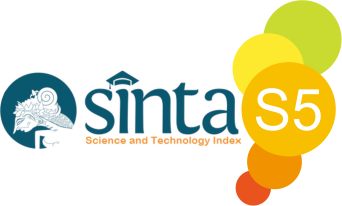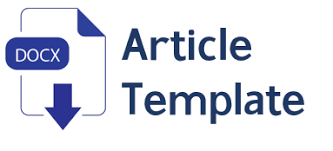Pembelajaran Akuntansi Secara Online: Pengujian Model Unified Theory Of Acceptance Dan Use Of Technology (UTAUT)
DOI:
https://doi.org/10.59086/jam.v1i3.171Keywords:
E-learning system, Acceptance, UTAUT modeAbstract
This study aims to test and analyze the factors that affect the E-learning System at the Faculty of Economics and Business, University of Mataram. The unified theory of acceptance and use of technology (UTAUT) model is a synthesis of a technological acceptance model that will be appropriately used as an e-learning evaluation model. The variables used in this study are the four key constructs of UTAUT, namely; performance expectancy, effort expectancy, social influence, and facilitating condition. The samples in this study were determined using purposive sampling and determination of the number of samples using the Yamane taro technique so that a total sample of 229 respondents was obtained. Data collection was carried out by the questionnaire method and used SPSS version 25 in carrying out statistical data analysis. The results of this proposal show that the variables of performance expectancy, effort expectancy, and social influence do not have a significant effect on the e-larning system, while the facilitating condition variables have a significant effect on the e-learning system.
Keyword: E-learning system, acceptance, UTAUT mode
Downloads
References
Agustin, H., & Erly Mulyani. (2016). Studi Empiris Penerimaan dan Penggunaan E- Learning System di Kalangan Mahasiswa Akuntansi Fakultas Ekonomi UNP. Seminar Nasional Aplikasi Teknologi Informasi (SNATI) 2016, Agustus, 17–22.
Almaiah, M. A., Alamri, M. M., & Al-Rahmi, W. (2019). Applying the UTAUT Model to Explain the Students’ Acceptance of Mobile Learning System in Higher Education. IEEE Access, 7, 174673–174686. https://doi.org/10.1109/ACCESS.2019.2957206
Aparicio, M., Bacao, F., & Oliveira, T. (2017). Grit in the path to e-learning success. Computers in Human Behavior, 66, 388–399. https://doi.org/10.1016/j.chb.2016.10.009
Faizah, I. N., Ramadhani, E., Andarini, D. P., & Nagari, P. M. (2021). Persepsi Mahasiswa Akuntansi pada Pelaksanaan E-learning Mata Kuliah Akuntansi Keuangan Menengah. Prosiding National Seminar on Accounting, Finance, and Economics, 1(4), 179–187.
Fremaditiya, T. (2012). Pengaruh Pemanfaatan Media E-learning dan Lingkungan Belajar Terhadap Kreativitas Siswa Pada Mata Pelajaran TIK Kelas VIII di SMPN 1 Gamping (p. 262).
Ghozali, I. (2018). Aplikasi Analisis Multivariate Dengan Program IBM SPSS 25. In Universitas Diponegoro Yogyakarta (9th ed.).
Hidayati, N. (2010). Sistem E-Learning Untuk Meningkatkan Proses Belajar Mengajar : Studi Kasus Pada Sma Negeri 10 Bandar Lampung. Jurnal Telematika MKom, 2(1), 70–75.
Ibnudin, I. (2012). Pengantar Akuntansi 1.
Karwati, E. (2014). Pengaruh Pembelajaran Elektronik (E-Learning) Terhadap Mutu Belajar Mahasiswa the Influence of E-Learning Based on Information Technology Toward Students Quality of Learning. Jurnal Penelitian Komunikasi, Vol. 17 No(530), 41–54.
Kurnia, D. (2020). Penerimaan dan Penggunaan E-Learning pada Masa Pandemi Covid-19: Aplikasi Model UTAUT2. JKTP: Jurnal Kajian Teknologi Pendidikan, 3(4), 435–447. https://doi.org/10.17977/um038v3i42020p435
Ma’rifatin, Q. I., Mursityo, Y. T., & Saputra, M. chandra. (2019). Analisis Penerimaan Pengguna E-Learning Menggunakan Model Unified Theory Acceptance and Use of Technology (UTAUT) dan Task tecnhologi Fit (TTF). Jurnal Pengembangan Teknologi Informasi Dan Ilmu Komputer, 3(1), 2480–2489. https://doi.org/10.33603/jka.v3i1.2129
Mahande, R. D., & Jasruddin. (2018). UTAUT Model: Suatu Pendekatan Evaluasi Penerimaan E-Learning pada Program Pascasarjana. 784–788. https://doi.org/10.31227/osf.io/254j7
Nasir, M. (2013). Evaluasi Penerimaan Teknologi Informasi Mahasiswa di Palembang Menggunakan Model UTAUT. Seminar Nasional Aplikasi Teknologi Informasi (SNATI), 1(1), 15–2013. https://journal.uii.ac.id/Snati/article/view/3006
Nasution, S. lam’ah, Windari, F., Harap, S. Z., & Elvina. (2021). Pengaruh Media Pembelajaran Online Dalam Pemahaman dan Minat Belajar Mahasiswa Pada Bidang Studi Akuntansi di FEB Universitas Labuhanbantu. ECOBISMA, 8(1), 67–75.
Park, S. Y., Nam, M. W., & Cha, S. B. (2012). University Students’ Behavioral Intention To Use Mobile Learning: Evaluating The Technology Acceptance Model. British Journal of Educational Technology, 43(4), 592–605. https://doi.org/10.1111/j.1467-8535.2011.01229.x
Purwanto, S. (2013). Statistika untuk Ekonomi dan Keungan Modern (edisi 2). Selemba Empat.
Risnawati, N. (2015). Pengembangan Media Pembelejaran Akuntansi Berbentuk Modul Pembelajaran Digital Untuk Siswa SMK Negeri 1 Bantul Kelas XI Jurusan Akuntansi pada Materi pokok Akuntansi Utang (Vol. 151, pp. 10–17). https://doi.org/10.1145/3132847.3132886
Rotikan, R., & Aseng, A. C. (2019). Identifikasi Faktor-Faktor Yang Mempengaruhi Mahasiswa Ilmu Komputer Dalam Mempelajari dan Menggunakan Framework Pemrograman. CogITo Smart Journal, 5(1), 79. https://doi.org/10.31154/cogito.v5i1.155.79-88
Sari, F. (2011). Implementasi E-learning system Dengan Mengguanakan Model Unified Theory of Acceptance and use of Technology. 1–12. https://www.researchgate.net/publication/316018725
Sedana, I. G. N., & Wijaya, S. W. (2012). Penerapan Model Utaut Untuk Memahami Penerimaan Dan Penggunaan Learning Management System Studi Kasus: Experential E-Learning of Sanata Dharma University. In Jurnal Sistem Informasi (Vol. 5, Issue 2, p. 114). https://doi.org/10.21609/jsi.v5i2.271
Sikumbang, E. D. (2014). Penerapan Model UTAUT Dalam Sistem Pembelajaran E-Learning. Jurnal Paradigma, Akademik Manajemen Informatika Dan Komputer Bina Sarana Informatika (AMIK BSI) Jl. RS. Fatmawati No. 26 Pondok Labu, Jakarta Selatan, XVI(1), 85–92.
Siregar, S. (2017). Metode Penelitian Kuantitatif: Dilengkapi Dengan Perbandingan Perhitungan Manual & SPSS. In Kencana (Pertama).
Soraya, Suherma, L., & Zawitri, S. (2020). Pemanfaatan E-Learning berbasis Moodle dalam Meningkatkan Motivasi dan Hasil Belajar. Eksos, 16(1). https://doi.org/10.31573/eksos.v16i1.89
Ucu, N. L., Paturusi, S. D. E., & Sompie, S. R. U. A. (2018). Analisa Pemanfaatan E-Learning Untuk Proses Pembelajaran. Jurnal Teknik Informatika, 13(1). https://doi.org/10.35793/jti.13.1.2018.20196
Venkatesh, V., & Davis, F. D. (2000). Theoretical extension of the Technology Acceptance Model: Four longitudinal field studies. Management Science, 46(2), 186–204. https://doi.org/10.1287/mnsc.46.2.186.11926
Venkatesh, V., Morris, M. G., Davis, G. b., & Davis, F. D. (2003). User Accaptance of Information Technology: Toward A unified View. International Encyclopedia of Ergonomics and Human Factors, 27(3), 425–478. https://doi.org/10.1201/9780849375477.ch230
Venkatesh, V., Thong, J. Y. L., & Xu, X. (2012). Consumer Acceptance and Use of Information Technology: Extending The Unified Theory of Acceptance And Use Of Technology. MIS Quarterly, 36(1), 157–178. http://papers.ssrn.com/sol3/papers.cfm?abstract_id=2002388
Downloads
Published
How to Cite
Issue
Section
License
Copyright (c) 2022 Nadia Elsha, Siti Atikah, Indri Pupitasari Lenap

This work is licensed under a Creative Commons Attribution 4.0 International License.
This is an open-access journal. All works are published under the Creative Commons license CC-BY which means that all content is freely available at no charge to the user or his/her Institution. Users are allowed to read, download, copy, write, improve, and create derivative creation even for other lawful purposes, this license permits anyone to, as long as they cite and license the derivative creation under similar terms

This work is licensed under a Creative Commons Attribution 4.0 International License.
Most read articles by the same author(s)
- Ruhana Nur Halila, Siti Atikah, Indria Puspitasari Lenap , Karakteristik Dewan Direksi dan Manajemen Laba di Indonesia , Balance : Jurnal Akuntansi dan Manajemen: Vol. 1 No. 3 (2022): December 2022


















